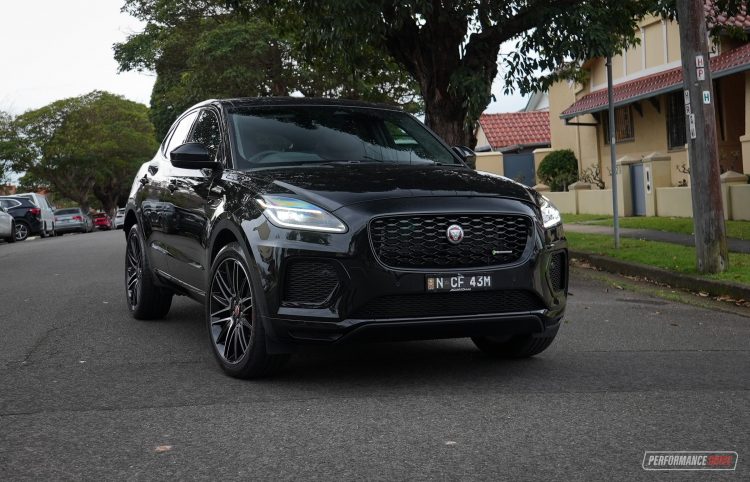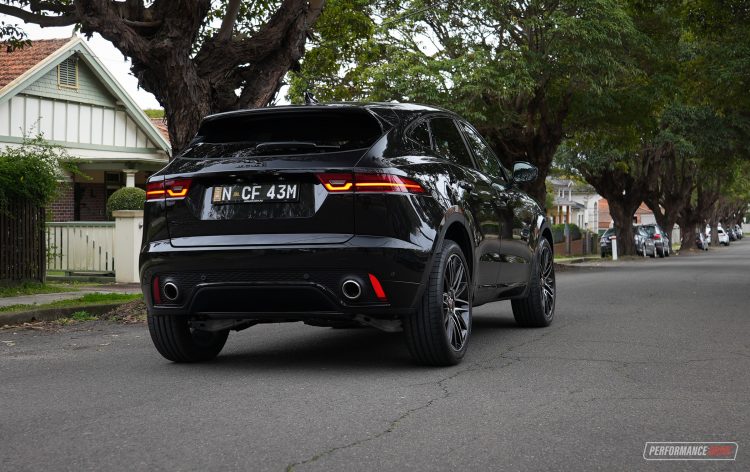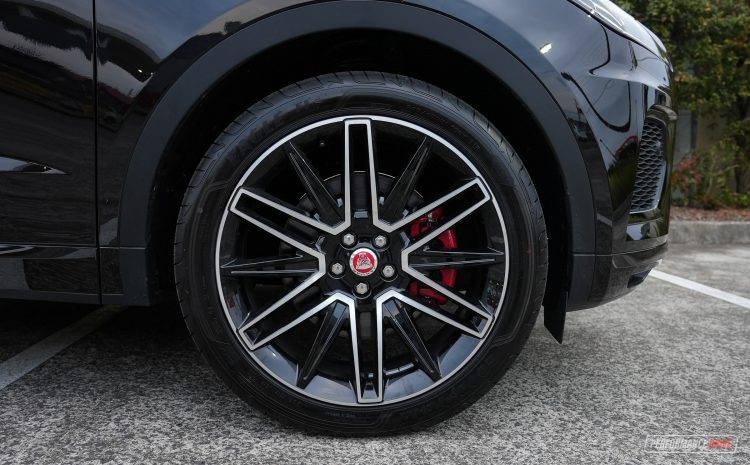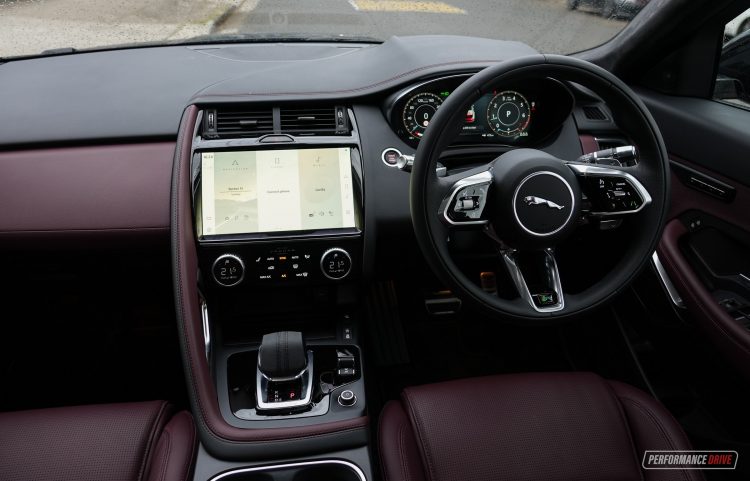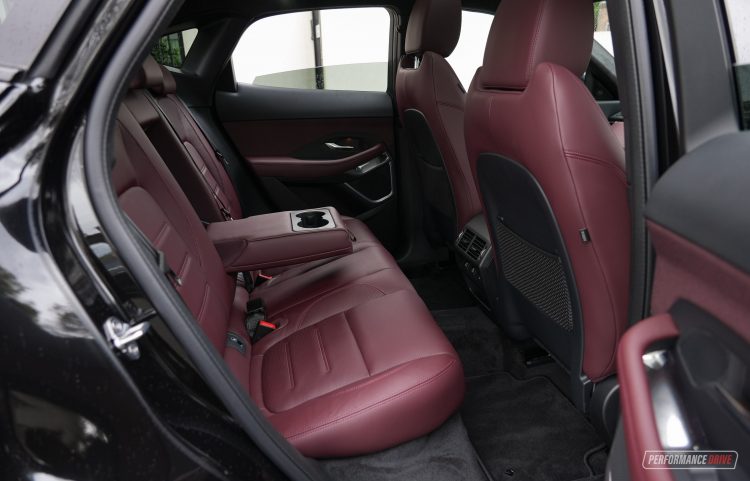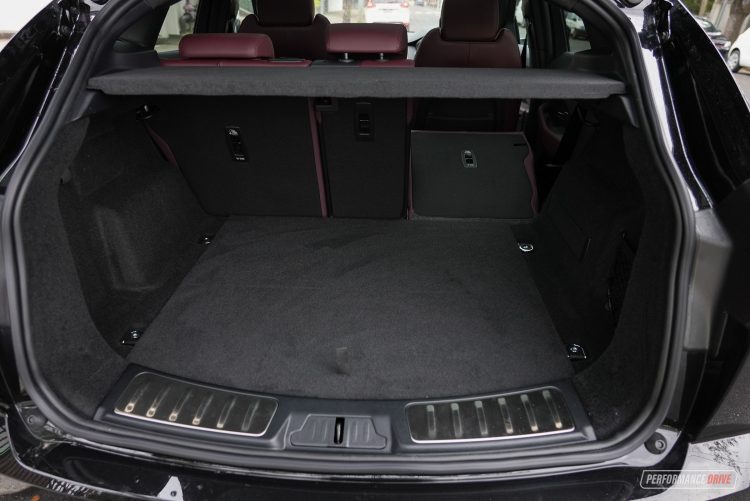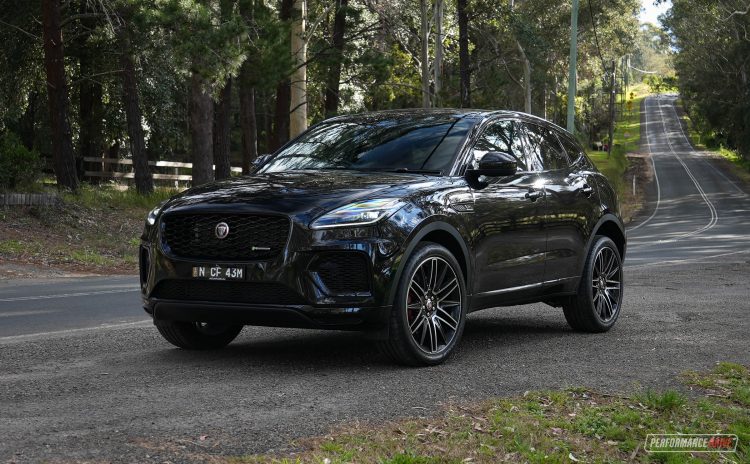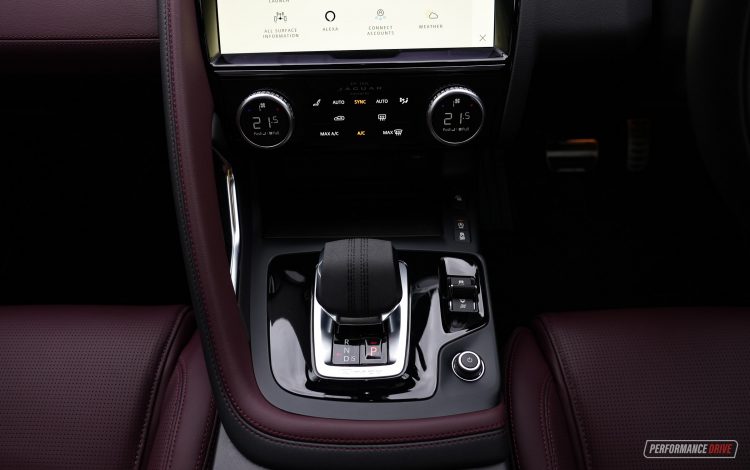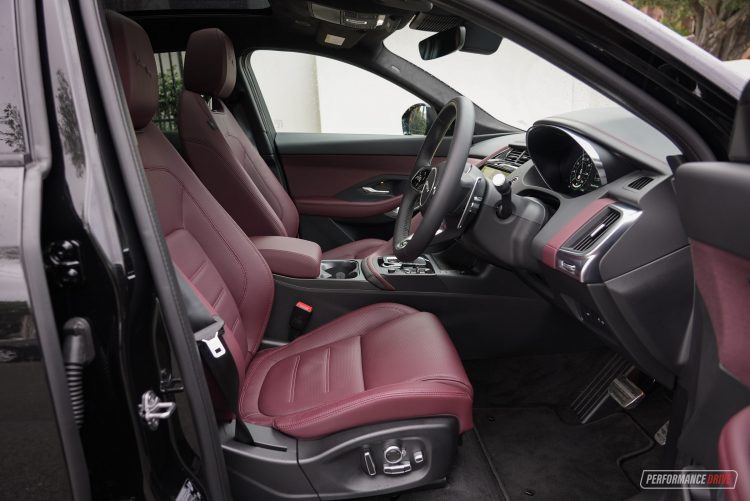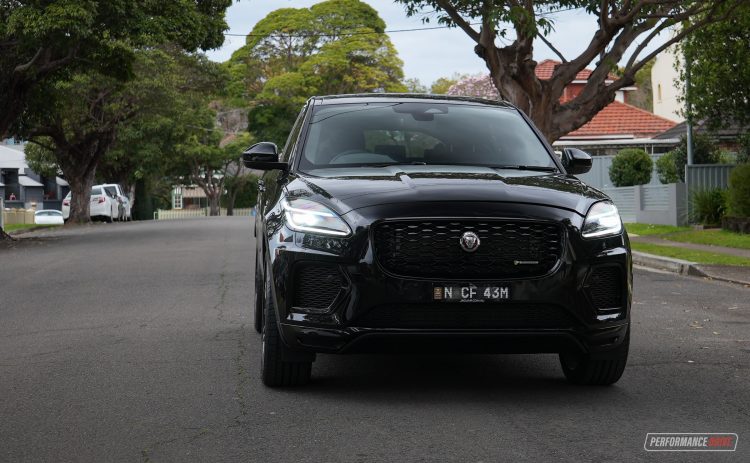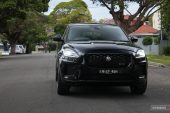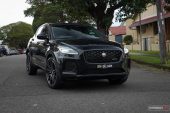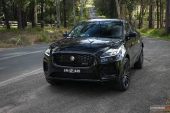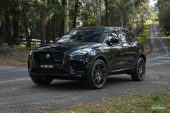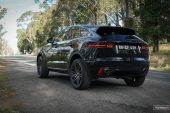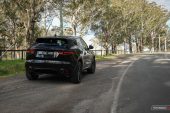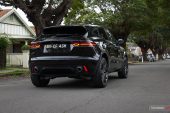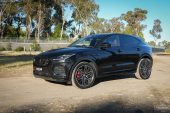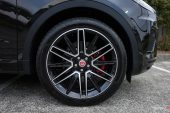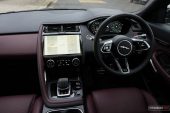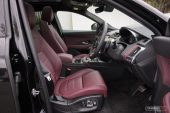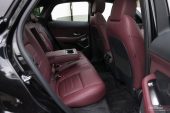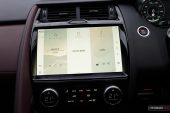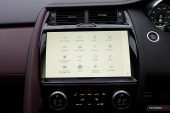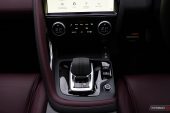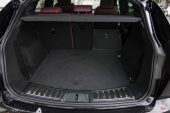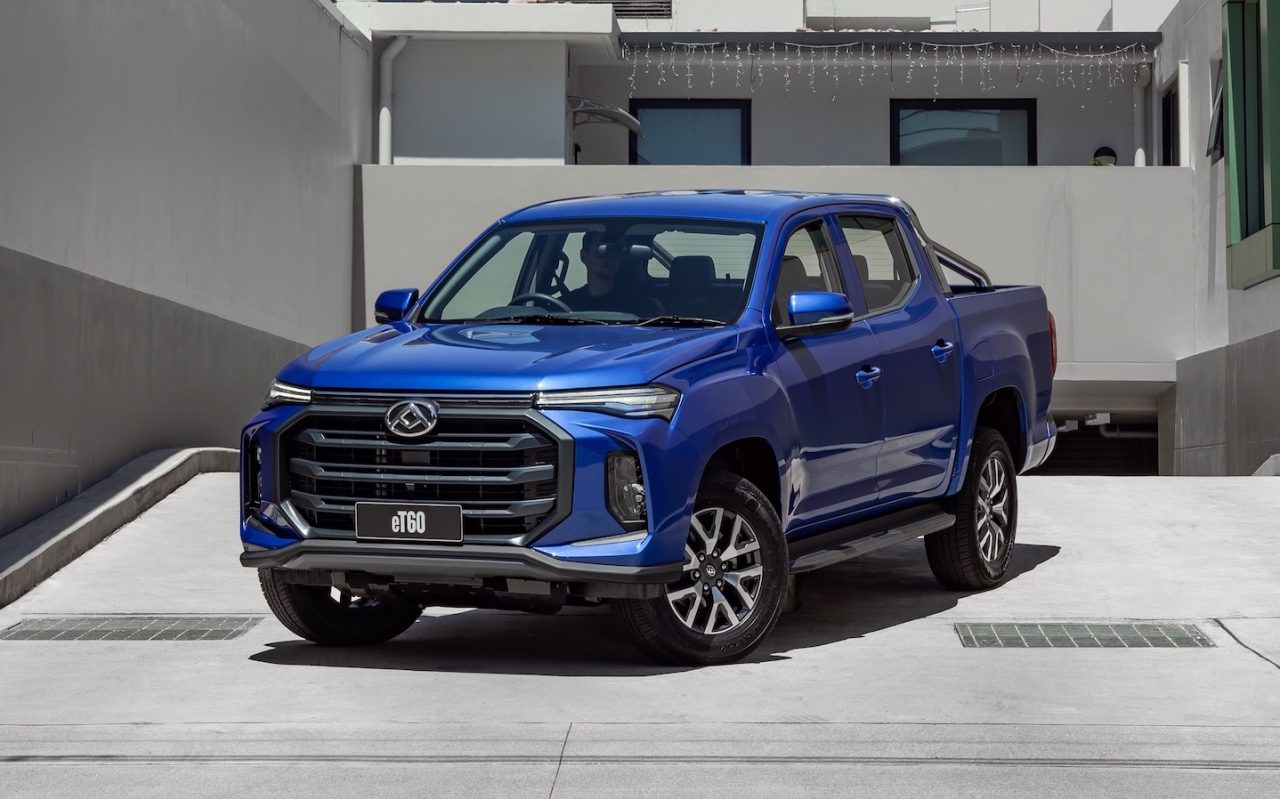Since arriving on the scene in 2017, the Jaguar E-PACE has become one of the company’s most popular models in the showroom. A light facelift and update in technology introduced in 2021 should ensure it remains high in demand.
So far this year (through October), Jaguar Australia has sold 251 examples. That’s down 50.3 per cent on the same 10-month period last year, however, we suspect some of the production delays faced by most of the industry could be partly to blame. Even so, with 251 units on the board that makes it the second most popular Jaguar in the showroom, behind the larger F-PACE (293 units).
For the MY2023 model Jaguar offers four main variants and two 2.0-litre turbo powertrain options, kicking off with the P250 R-Dynamic S priced from $71,070 and topping out with the P300 Sport from $87,035. Here we’re sampling the second-from-the-top P250 R-Dynamic HSE, which is priced from $78,177 (all prices exclude on-road costs).
2023 Jaguar E-PACE P250 R-Dynamic HSE – THE SPECS
[column width=”47%” padding=”6%”]Engine: 2.0-litre turbo four-cylinder
Output: 184kW@5500rpm / 365Nm@1300-4500rpm
Transmission: Nine-speed auto
Drive type: All-wheel drive
Wheels: F & R: 20×8.0, 235/50 (optional 21s fitted)
ANCAP: Five stars
Tare weight: 1745kg
Power-to-weight: 9.48:1 (kg:kW)
Official fuel economy: 8.0L/100km
Economy during test: 9.6L/100km
Fuel capacity/Type: 67L/95 RON[/column] [column width=”47%” padding=”0″]Power efficiency: 23kW:L/100km
0-60km/h: 3.30 seconds*
0-100km/h: 7.60 seconds*
60-110km/h: 6.04 seconds*
1/4 mile: 15.70 seconds at 143.0km/h*
Max acceleration: 0.830g
100-0km/h braking: 3.04 seconds at 37.93 metres*
Max deceleration: -1.120g
Decibel at idle: 44*
Peak decibel at 60-100km/h: 80*
Priced from: $78,177[/column][end_columns]
* Figures as tested by PerformanceDrive on the day. Factory claims may be different
2023 Jaguar E-PACE P250 R-Dynamic HSE – THE PACKAGE
We’re sure most will agree, Jaguar didn’t really need to make any changes to the design for the facelift in 2021-2022, as it’s still quite a stunning package. However, keen fans will notice a revised lower front bumper bar, new grille in the middle, with Jaguar’s latest double-J signature headlights completing the face. Around at the back you’ll notice the switch to the ‘chicane’ taillights as featured on most other Jaguar models now as well.
We especially like this colour combination featured here. The body is finished in Santorini Black with a deep Garnet Windsor red leather used for sections of the interior. This car also showcases superb 21-inch ‘Style 1078’ diamond-turned optional alloy wheels, which, despite the gigantic size (for this class), fill the wheel aches nicely. The black inner-spokes tie in the elegant black body.
If there was ever a small SUV that could manage the cool sinister presence of a big Jaguar or even a Range Rover, it’s the E-PACE. At night, with the crisp LED lights and optional Premium Cabin Lighting ($390), it is a stunning package to behold for this segment of vehicle.
And the same can be said of the interior. It looks and feels much more luxurious than what we usually see in this segment. The deep red leather extends across the dash and centre console, heralding a real high-end feel for the entire cabin, while the dash shows off JLR’s latest 11.4-inch Pivi Pro touch-screen – new for the E-PACE for post-2021.
We think the Pivi Pro system is a huge leap ahead of JLR’s older systems, with pleasant graphics and more logical menus improving the overall functionality. It also comes packed with wireless Android Auto and Apple CarPlay, digital radio, and an 11-speaker Meridian sound system as standard.
The driving position is intimate and ergonomic, with a lovely three-spoke steering wheel featuring classy touch-pad style buttons. It does take a bit of time to get used the button process for navigating the digital instrument cluster, with the ‘up’ button confusingly operating as the ‘back’ or escape avenue as well as up. There are various configurable displays though so you can customise the central view to suit your preference.
Passenger space is pretty good in the front, with a natural driving position and convenient proximity to the controls. The ceiling is surprisingly tall in the back, so headroom is not bad at all for this class. Legroom is a bit clunky in the back, especially in the middle. But it’s nothing out of the ordinary for this vehicle class. Climate vents and charging ports are presented, which is always great to see in smaller vehicles.
The boot apparently measures in at a whopping 601 litres. That means it is bigger than many mid-size SUVs, let alone small SUVs that compete against this. However, we’re not sure what measuring classification JLR uses.
Some carmakers adopt the VDA (German) system which uses 1L blocks to measure the space, while others use the USA-based SAE system, measured with smaller blocks that tend to fill more gaps in the boot contours (often resulting in a larger calculated volume). Even so, it seems like a nice big useable space here, with a 12 volt socket on the wall for touring practicality, and a temporary spare wheel under the floor.
2023 Jaguar E-PACE P250 R-Dynamic HSE – THE DRIVE
The E-Pace is based on Jaguar Land Rover’s PTA platform, shared with the Range Rover Evoque and Land Rover Discovery Sport. It offers sporty driving dynamics as well as a comfortable ride. For the E-PACE, it seems Jaguar has tried to provide a good balance between suspension compression and absorption for bumps, while offering a taut and tensioned feel during cornering.
It sometimes behaves like it’s pouncing from corner to corner, and even longitudinal forces make it feel ‘springy’ and seesaw-esque. But it’s an energetic and enthusiastic driver on a windy country road. It means in the city it can become a little tiring and busy. The hefty 1745kg tare weight doesn’t help. Fortunately, the steering is splendid, with a good weight to it and plenty of communication.
A set of 245/45 Goodyear Eagle F1 SUV tyres provide huge amounts of grip so you can confidently and safely enjoy a spirited drive in the mountains. All variants in Australia feature all-wheel drive for optimum safety and all-season grip, too. Having AWD as standard places it above some of its competitors, and with 204mm of ground clearance it does offer a reasonable level of off-road performance. Sticking to the standard 20-inch wheels is probably your best bet though if off-road adventures are going to be a regular thing.
As mentioned, all E-PACE models in Australia are powered by a 2.0-litre turbo-petrol four-cylinder engine, developing either 184kW/365Nm in the P250 or a potent 221kW/400Nm in the P300. The engine is part of JLR’s Ingenium engine family, and comes with mild-hybrid 48V battery tech in the case of the P300.
Although not as powerful as the P300, the P250 offers all the performance you need and could expect from a mid-level variant. Peak torque is spread wide, from 1300-4500pom, so it has no trouble surging up long steep hills, including with a full load on board. It produces a subtle yet sporty exhaust note, too, particularly during the lower parts of the rev range.
Outright performance is pretty good for what it is. Jaguar claims 0-100km/h in 7.5 seconds and we clocked it in 7.60 using a Racelogic Vbox Sport. Our time was achieved by building the engine revs while on the brake pedal before setting off, for a sling-shot fling off the line. By simply mashing the throttle pedal the best result we saw was 8.34 seconds.
We notice our best time is 0.3 seconds quicker than our last-tested E-PACE P250, back in 2018. We can’t figure out why there is a difference, but, of course, there are many factors that can and do influence results, such as fuel quality, wind speed and direction, and outside temperature. Our last test was conducted in April whereas this test was done in August.
In our opinion this level of performance is about perfect for this style of vehicle. It’s quick enough to have some fun and to keep up with traffic, but it’s not stupidly fast that it’ll put your licence in jeopardy or drink copious amounts of fuel. Our main and only gripe with the powertrain is the nine-speed auto.
It behaves like an elastic band, in our opinion, initially bogging down and then twanging with an almost unexpected catapult. We think it needs further refinement to match the rest of the car. There is a Dynamic driving mode as well as an S mode specifically for the transmission, both of which magnify the sensation of urgency. However, the fact it holds onto gears for longer and holds off on upshifting too soon does seem to help.
Fuel consumption is officially stamped at 8.0L/100km, translating to a theoretical average range of 838km from the 67L fuel tank. The consumption rate is up from 7.7L/100km in the 2018 P250. In reality we experienced an average of 9.6L/100km.
2023 Jaguar E-PACE P250 R-Dynamic HSE – THE VIDEO
2023 Jaguar E-PACE P250 R-Dynamic HSE – THE VERDICT
The Jaguar E-PACE has to be one of the best-looking SUVs in its segment. And if you play around with colour/interior configurator during ordering you can piece together quite a classy package – like this test car, finished in Santorini Black with a deep red leather.
JLR’s latest Pivi Pro curved touch-screens is one of the nicest in the business, and the interior design and quality in most areas is outstanding. We can certainly see why this is one of Jaguar’s most popular models.
For us, the calibration applied to the nine-speed auto transmission does detract from the otherwise refined and dynamic driving character. It stretches and twangs during normal take off, and occasionally bogs down in a high gear during slow corning. We also think the tare weight is a bit high, especially on the P250 as it misses out on the heavy mild-hybrid tech reserved for the P300.
[column width=”47%” padding=”6%”]PROS:
– High-end interior design and feel
– Distinctive and somewhat exotic exterior with high attention to detail
– Sporty driving character
– Lots of personalisation options so you can create a really unique package
[/column] [column width=”47%” padding=”0″]CONS:
– ‘Stretchy’ 9-speed auto needs refinement, hard to drive smoothly
– Prices have jumped quite a bit since its debut
– Steering wheel buttons are initially a bit confusing[/column][end_columns]
As always, if you’re thinking about buying a new car don’t forget to click here to speak with our car buying specialists.
